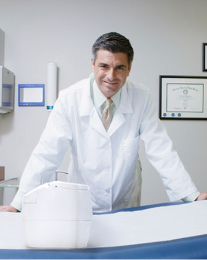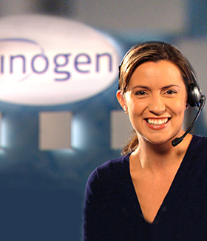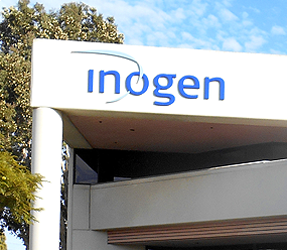With the Inogen, traveling with your airline approved portable oxygen concentrator (POC) is easy. The Inogen One meets FAA guidelines for use onboard all commercial aircrafts for flights starting or stopping within the United States. Many international airlines will also allow FAA-compliant portable oxygen concentrators onboard.
It is important to plan ahead and to check with your airline well in advance of your travel date to learn specific requirements. Without proper planning, airlines may not be equipped to provide backup oxygen, so coordinating a backup source for use at your final destination is crucial. In case of changes to an airline’s oxygen policy, we strongly recommend that you contact your airline directly prior to purchasing your ticket to confirm the requirements for the on-board use of your portable oxygen concentrator. Read on for a step-by-step guide on how to fly with Inogen’s portable oxygen concentrators that meet FAA guidelines.
Before Purchasing Tickets[1]
- Inform airline that you will be travelling with your Inogen One.
- Determine the requirements for batteries for your desired travel dates and locations.
- Confirm that your plane will have available electrical power onboard.
- Request seating with an available power port.
- Ensure that you have sufficient battery power for the duration of your flight, including a conservative estimate of unanticipated delays.
Planning Your Flight[1]
Before you travel with a portable oxygen concentrator meeting FAA guidelines, you must obtain a signed statement from your physician that includes details about:
- Your ability to see/hear alarms and respond appropriately
- When oxygen use is necessary (all or a portion of the trip)
- Maximum flow rate corresponding to the pressure in the cabin under normal operating conditions.
You can download a physician statement here:
Physician Statement Template (32 KB)
This physician statement is only a template. Some airlines may require that the statement obtained from your physician be printed on his/her official letterhead. This statement needs to be kept with you at all times during your flight. A new statement will not be necessary each time you fly, but the statement should be available during every flight while you travel.
Before Your Flight
Here are some things to keep in mind the day your flight departs:
- Ensure your Inogen One is clean, in good condition and free from damage or other signs of excessive wear or abuse.
- Bring enough fully charged batteries with you to power your Inogen One for the duration of the flight plus a conservative estimate of unanticipated delays. Contact your equipment provider to obtain additional Inogen One batteries. Airline may require you disclose the number of batteries you will be bringing on board.[2]
- CAUTION: Airlines may not be equipped to provide backup oxygen.
- Check the airline’s website to see if the flight has power outlets. Some low cost and regional/commuter airlines do not offer on-board electrical power. If your travel plans call for flights on low cost or regional airlines, you will need sufficient battery power for the duration of the flight, plus a conservative estimate of unanticipated delays. Always check with airline to be sure your aircraft has the power source you need.[3]
- Check with your airline regarding the availability and use of on board electrical outlets for electronic devices intended for use during flights.[2]
- Arrive at the airport early. Airport security screening personnel may require extra time to inspect your Inogen One.
- While waiting to board your flight, you may be able to conserve battery power by powering your Inogen One from an electrical outlet in the airport terminal.
During Your Flight
- When you find your seat, locate the power port, if available. If your seat does not have a power port or if you have difficulty plugging in your power supply or AC power supply, ask a flight attendant for assistance.
- During taxi, takeoff and landing, stow your Inogen One under the seat in front of you. Your Inogen One will fit upright under most airline seats. However, if it doesn’t fit, you may turn it on its side.
- It is not necessary to turn off your Inogen One during taxi, takeoff and landing if your physician’s written statement requires you receive oxygen during these periods.
- When you are traveling with the Inogen One and are not planning to use it during the flight, remove the battery from the concentrator.
- You must inform the airline you will be using your Inogen One. Have your physician letter with you and ready for inspection if requested.
After Your Flight
- Remember to recharge additional batteries you may have used prior to your next flight.
- Arrange for the delivery or pick up of your backup oxygen supply.
- Have fun.
Since 5/24/2016, the FAA issued a final rule on FAA acceptance criteria for POCs, replacing the existing FAA case-by-case approval process for each make and model of POC in Special Federal Aviation Regulation (SFAR) No. 106. This final rule replaces the current process and allows passengers to use a POC on board an aircraft if the POC satisfies certain acceptance criteria and bears a label indicating conformance with the acceptance criteria. The labeling requirement only affects POCs intended for use on board aircraft that were not previously approved for use on aircraft by the FAA. Additionally, this rulemaking will eliminate redundant operational requirements and paperwork requirements related to the physician’s statement. Any POC model that was not previously identified in SFAR No. 106 as approved for use on aircraft must also bear a label indicating conformance with the acceptance criteria before it may be used on board an aircraft. This label will facilitate passenger and crew recognition of POCs that may be used in the cabin during all phases of flight.[1]
References
- Stoller, James K. “Patient Education: Supplemental Oxygen on Commercial Airlines (Beyond the Basics).” UpToDate, UpToDate Inc., 23 Apr. 2020, www.uptodate.com/contents/supplemental-oxygen-on-commercial-airlines-beyond-the- basics.
- “Acceptance Criteria for Portable Oxygen Concentrators Used On Board Aircraft.” Federal Register,FederalRegister.gov, 24 May 2016, www.federalregister.gov/documents/2016/05/24/2016- 11918/acceptance-criteria-for-portable-oxygen-concentrators-used-on-board-aircraft
- https://www.uponarriving.com/airplanes-power-outlets-usb/












